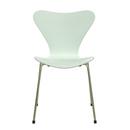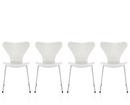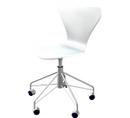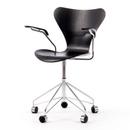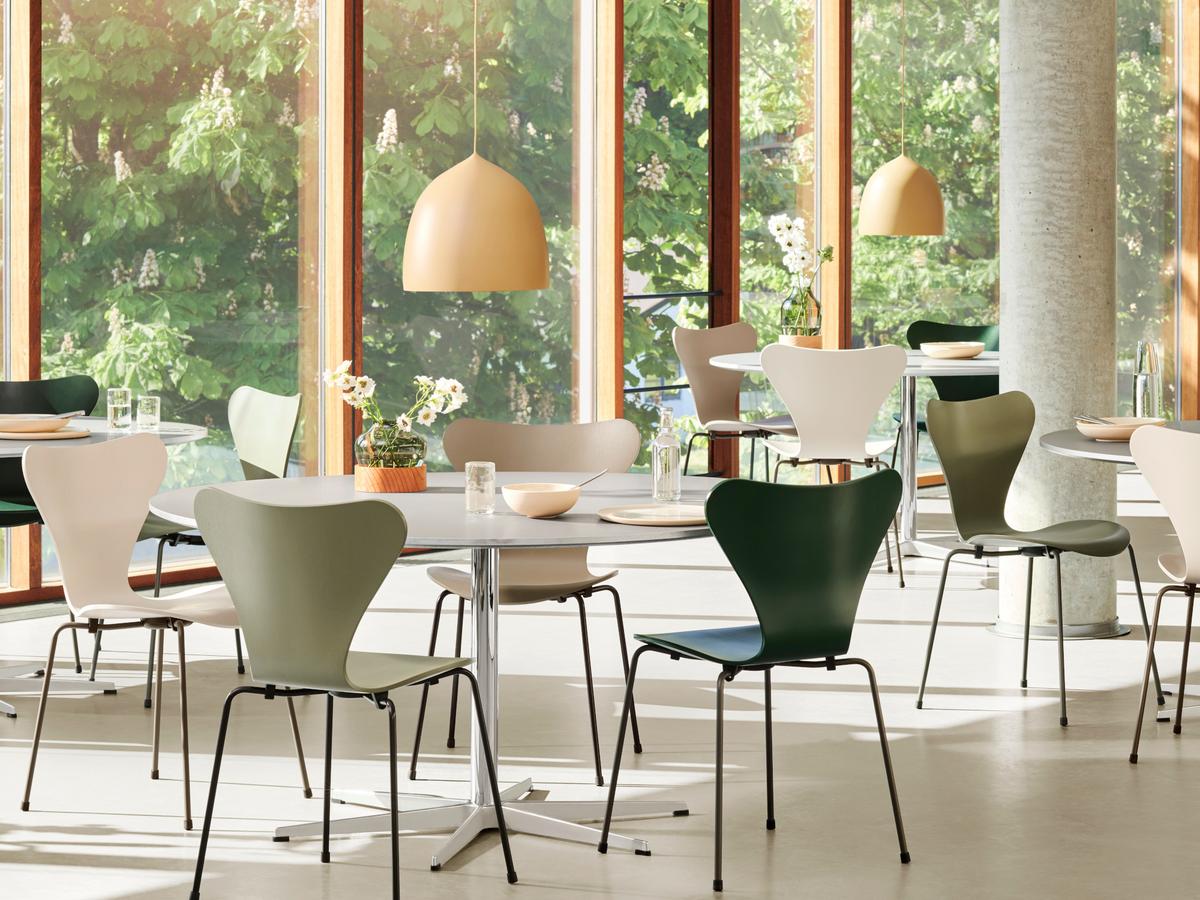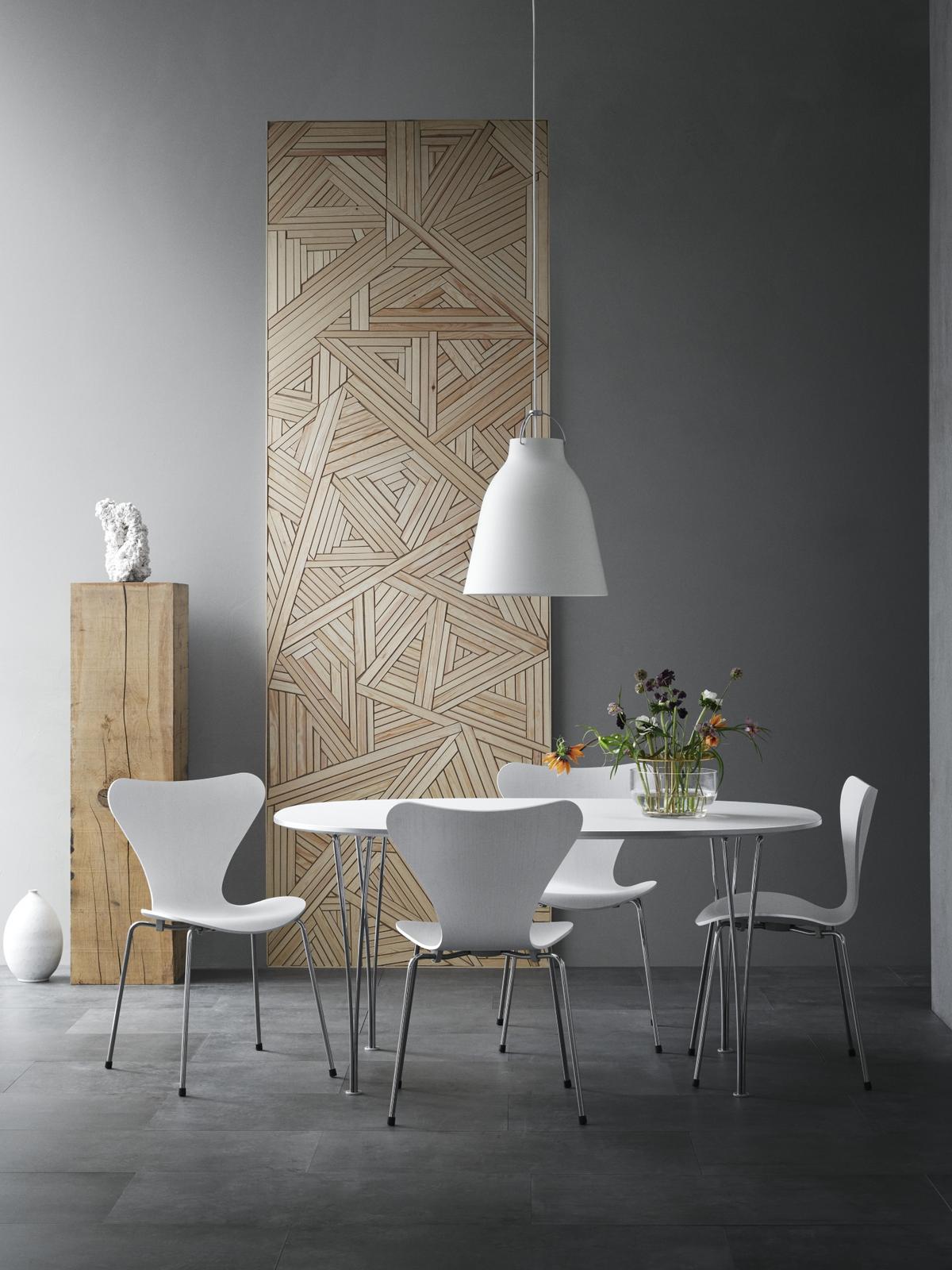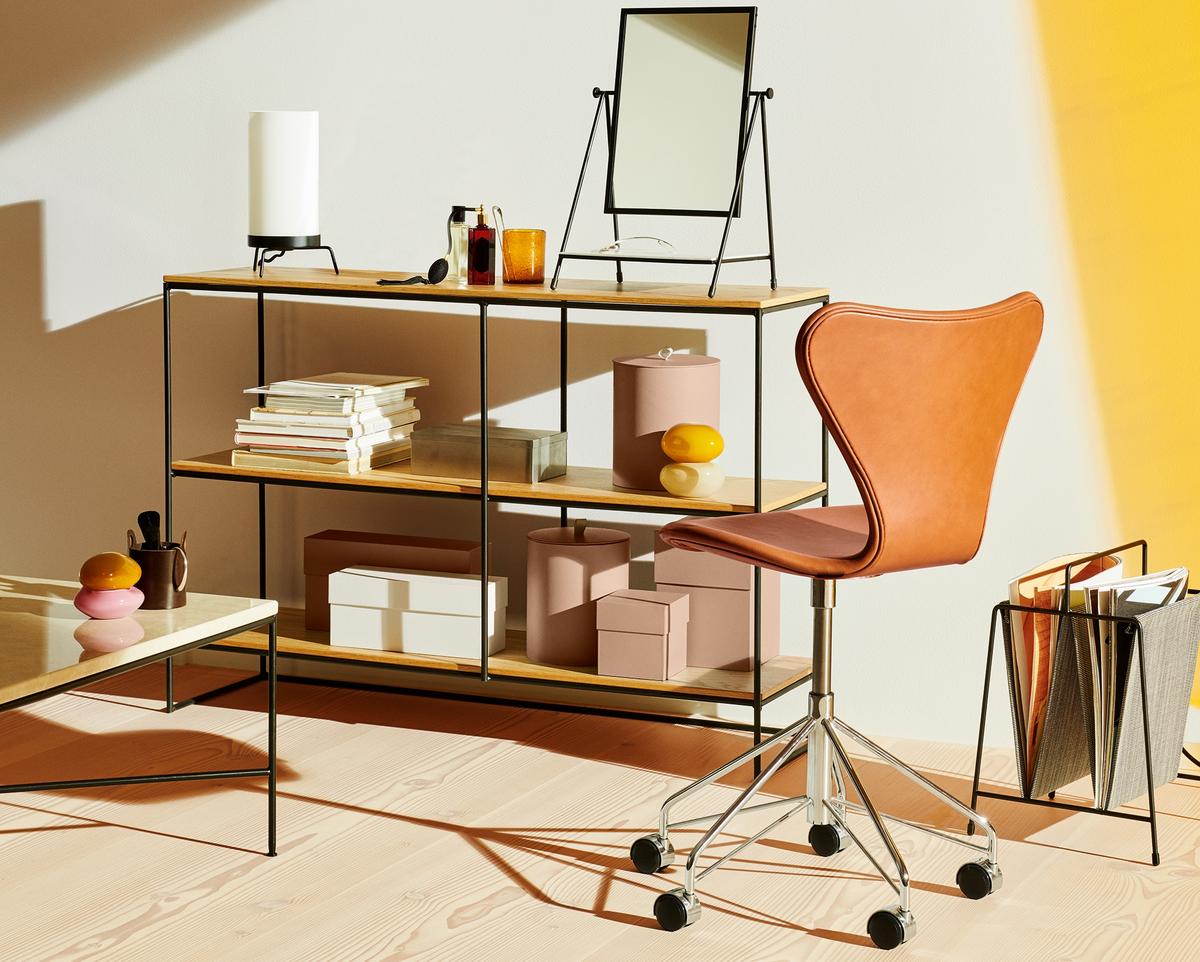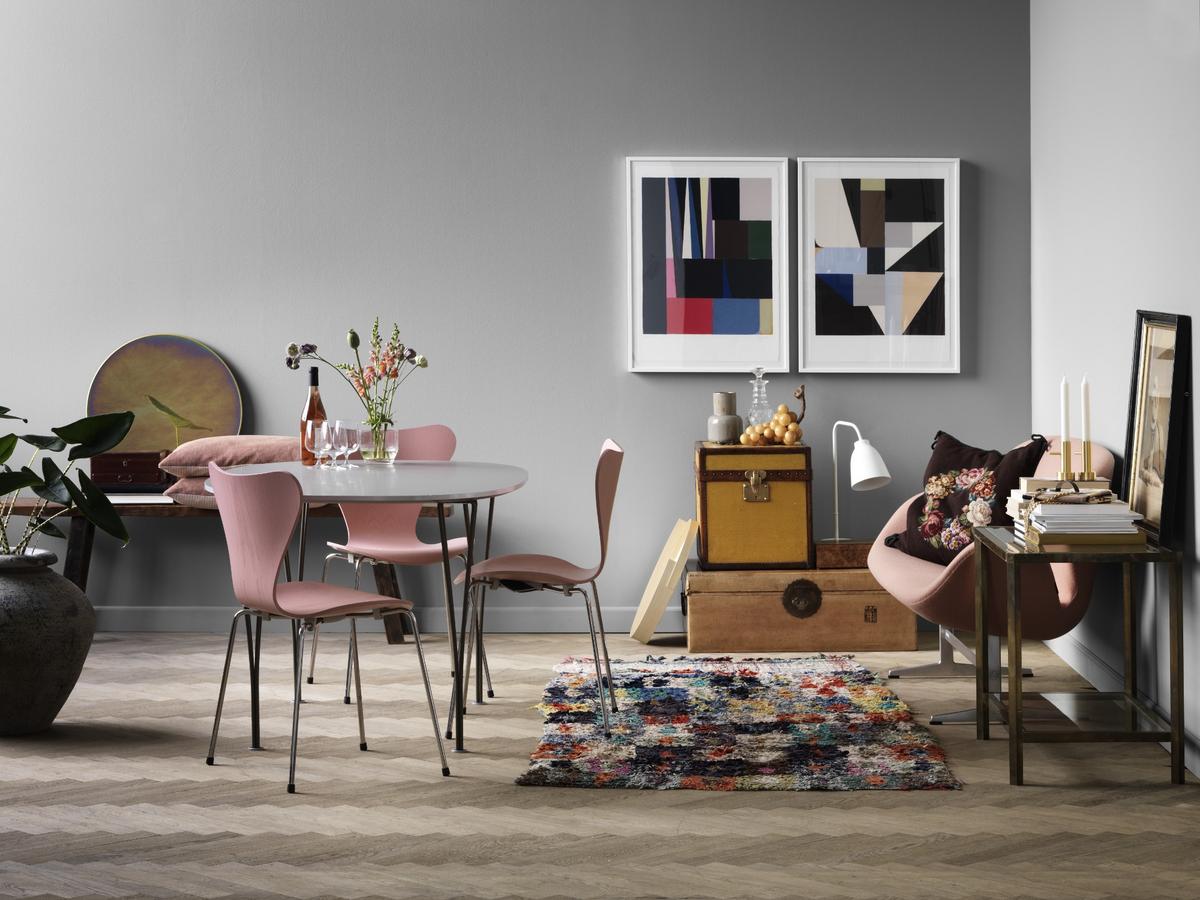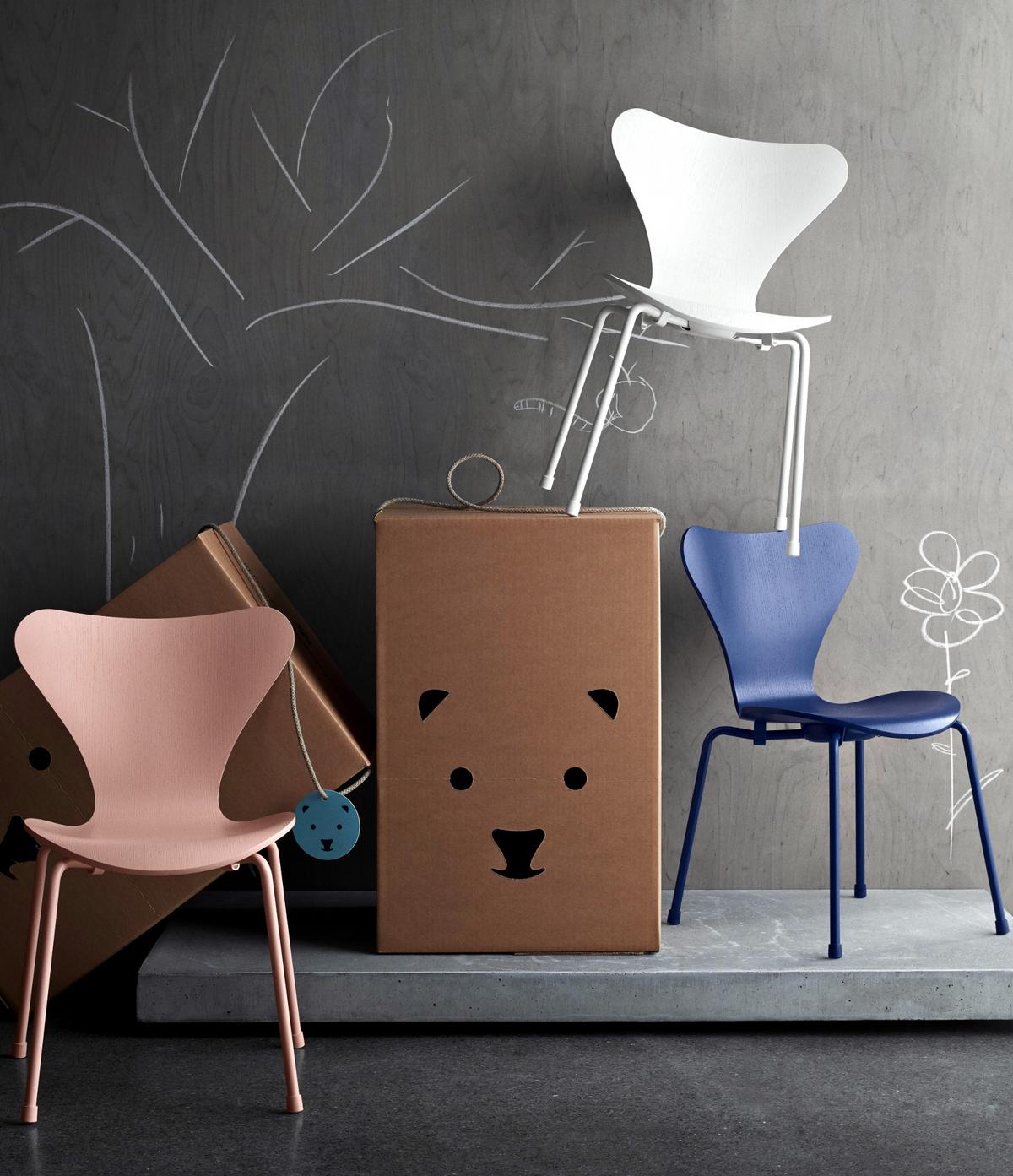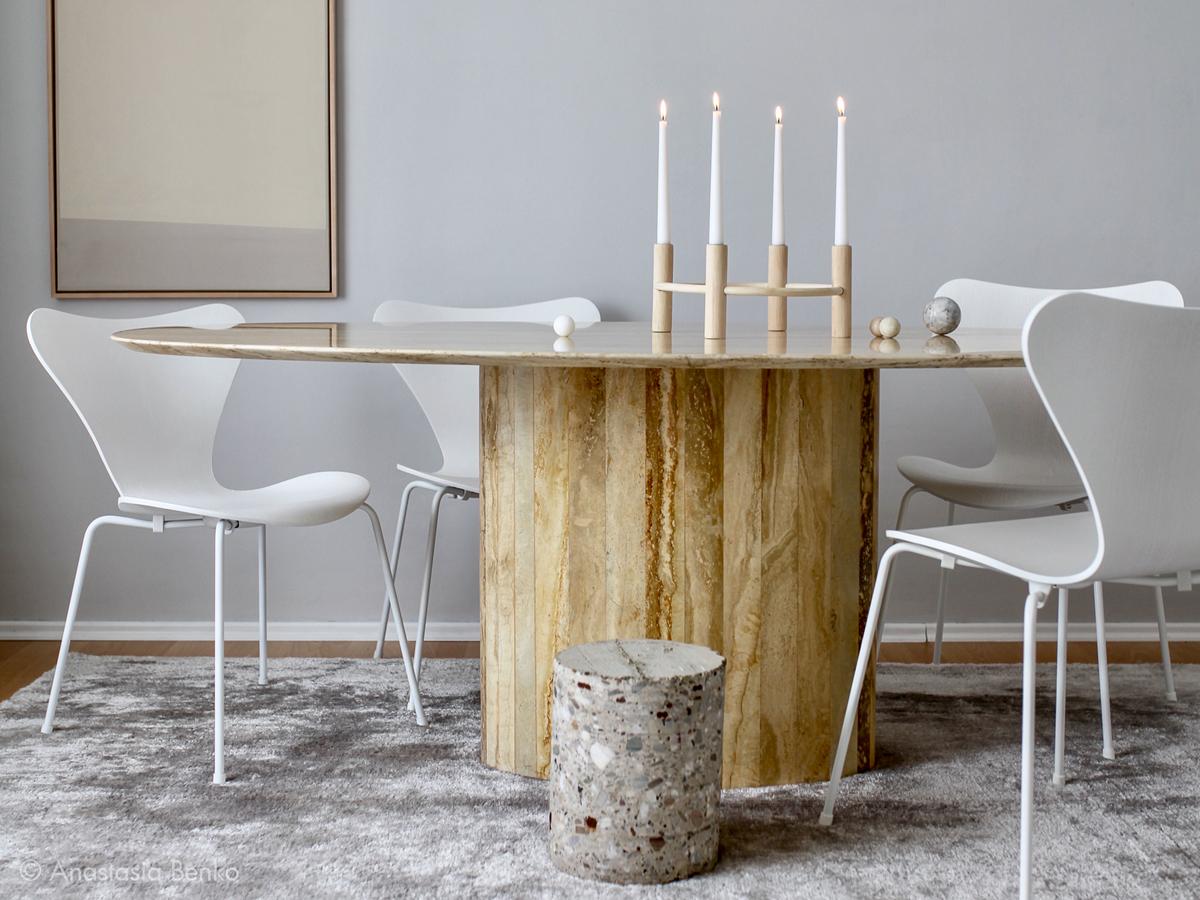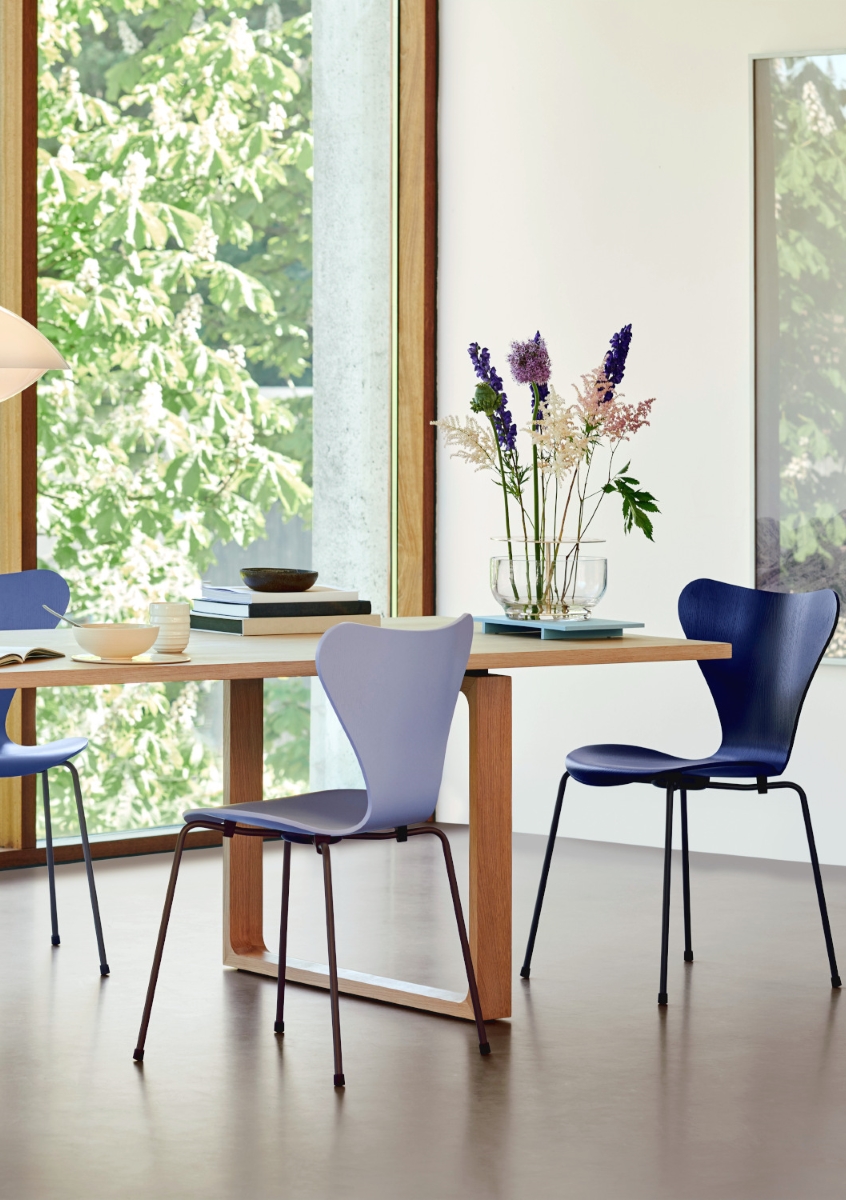Series 7 Collection
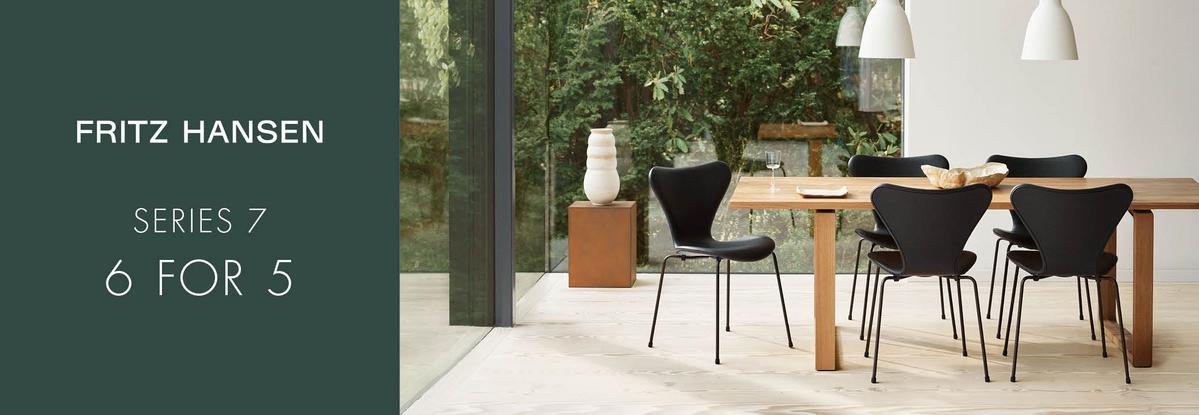
Happy Birthday "Series 7": Buy 6 chairs, pay for 5
The Series 7 chair celebrates its 70th birthday in 2025. To mark the occasion, if you buy five Series 7 chairs before June 30th, 2025, we will add a sixth as our gift to you. Choose between the Series 7 chair, the Series 7 chair with front upholstery or the Serie 7 7:14 AM Colour Edition. Simply place your six favourites in your shopping basket and the discount for the cheapest chair* will be automatically applied.
* The promotional discount is a component of the overall purchase contract, in case of cancellation all further responsibilities are regulated by our terms and conditions
Design
The Series 7 by Arne Jacobsen is one of the most successful designer chairs in furniture history, with over five million units sold since the 1950s. The reason is simple: the ease with which Jacobsen succeeded in combining visionary design with an innovative manufacturing process. With the predecessor of Series 7, the Ant chair from 1952, Jacobsen first applied the technique of laminated wood gluing and pressing the veneer panels around two axes to 3D form them. This process was perfected with the Series 7 chairs for Fritz Hansen with its characteristic curved shell and the characteristic tapering at the transition between seat and backrest. A shell which Arne Jacobsen then combined with various bases, in a manner similar to Ray and Charles Eames with their Plastic Chairs. The Arne Jacobsen chair Series 7 3107 is now also available as Series 7 New Colours Edition in a range of selected shell and frame colours.
Production
Even if technology has developed rapidly since the start of the production of the Series 7 in the 1950s, Fritz Hansen still relies on the combination of traditional craftsmanship and innovative technology. All Series 7 seat shells are made in the company's own factory in Europe from a single piece of plywood. After the veneer panels have been sorted by hand, the carpenter stacks nine veneer panels and cuts them by hand with a milling machine into the characteristic Series 7 shape. Then the veneer panels are pressed into their three-dimensional shape and the edges are then rounded off by a computer-controlled milling machine. Finally, each Arne Jacobsen chair is sanded by hand – in this process Fritz Hansen only trusts the human eye – and connected to the respective base. The core veneer of the Series 7 is always made of beech wood. Different types of wood are used as the face veneer, depending on the design. With a certified environmental and quality management system, Fritz Hansen guarantees the longevity and thus the sustainability of the Series 7 chairs as well as environmentally friendly manufacturing processes and fair working conditions.
Designer
Born in Copenhagen in 1902, Arne Jacobsen studied, like so many legendary Scandinavian designers, at the Royal Danish Academy of Art and began his career as an architect after graduating in 1927. Even before the Second World War, the young Jacobsen made a name for himself with major architectural projects such as the Bellevue lido in Copenhagen. As a designer, Jacobsen had his breakthrough after the War with the Series 7 and the collection of furniture that he developed for the SAS Hotel in Copenhagen. Arne Jacobsen's furniture and lights, especially the Egg Chair and Swan Chair as well as the AJ lights, spread from Scandinavia to the furthest corners of the globe and shaped understandings of Danish design beyond. The fact that Arne Jacobsen was to have such an influence on architecture and design was primarily due to the versatility of his work: He not only designed large buildings such as the Danish National Bank, but also things that at first glance seem insignificant, such as a teaspoon for his cutlery set with the same attention to detail and precision. In addition, Arne Jacobsen was an extremely productive designer who meticulously planned his projects, was able to put his visions on paper with a vitality that convinced the sponsors and clients of his plan's viability.
Historical Context
As with the designers of the Bauhaus, Arne Jacobsen tried to exploit the technical possibilities of series production in order to bring form and function into one unit in his designs. He designed ergonomically shaped, simple furniture that was mass-produced, thus ensuring that his designs could be used by as many people as possible. His design approach finds its theoretical equivalent in functionalism of the post-war period. This also fits in with the concept of the total work of art, which Jacobsen took to extremes with his SAS Hotel: he not only designed the building, but also all the furniture, including the fittings. Furniture and textile design, but also painting, were thus delimited by Jacobsen and outdated conventions were broken. What distinguishes Jacobsen's furniture design in contrast to his architecture projects to this day, however, are their specific, soft and organic forms, which Jacobsen borrowed directly from nature.
Manufacturer
In 1872 the master carpenter Fritz Hansen founded his eponymous furniture manufacturer in Copenhagen with the aim of combining furniture at a high level of craftsmanship with artistic expression. Under the direction of his son Christian E. Hansen, the craft business developed into an industrial company in 1899 and the first steam-bent chair was produced in 1915. In the first few decades Fritz Hansen was able to successfully complete extensive furnishing orders for institutions such as Christiansborg Palace or the Supreme Court in Copenhagen. From 1928 Fritz Hansen's grandsons worked in the company. One of them, Poul Fritz Hansen, began working with architects Kaare Klint and Arne Jacobsen in 1934. Arne Jacobsen first turned to Fritz Hansen himself with his Ant chair, 140 of which were to be produced for his canteen in Novo. However, Fritz Hansen only wanted to start production from 300 units, whereupon Jacobsen promised to sell the remaining 160 himself. From the second half of the 20th century, Jacobsen's designs, especially the Series 7, in whose development Poul Fritz Hansen himself participated, became the most important products of the manufacturer Fritz Hansen, to whom Arne Jacobsen transferred all production licenses. Today Fritz Hansen works with a number of internationally sought-after designers and is headquartered in Allerød, north of Copenhagen.























